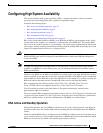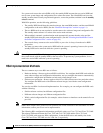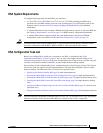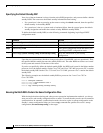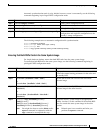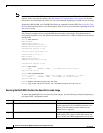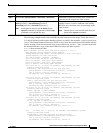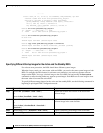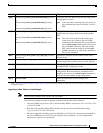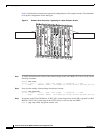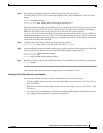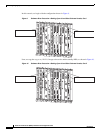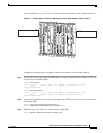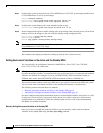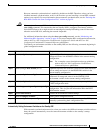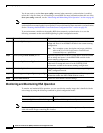
33
Route Switch Processor (RSP8) Installation and Configuration Guide
OL-4920-02
Configuring High System Availability
Upgrading to a New Software Version Example
Note The following examples show systems with two RSP8s.
The following example describes an upgrade scenario under the following conditions:
• The active RSP8 is in processor slot 6, and the standby RSP8 is in processor slot 7 of a Cisco 7513
or Cisco 7513-MX.
• Both the active and the standby RSPs currently use the same Cisco IOS Enterprise image,
rsp-pv-mz.120-23.S, in PC Card slot 0.
• We want to upgrade one RSP to run Cisco IOS Release 12.0(22.3)S1, and allow the other RSP to
run Cisco IOS Release 12.0(23)S. To guard against software failures, we will configure HSA
operation for software error protection.
Step 5
Router(config)# boot system flash bootflash:[filename]
or
Router(config)# boot system flash slot0:[filename]
or
Router(config)# boot system flash slot1:[filename]
Configures the active RSP to boot the new image from
the appropriate location.
Note In this procedure, the image that you specify in
this command only resides on the first, oractive,
RSP.
Step 6
Router(config)# boot system flash bootflash:[filename]
or
Router(config)# boot system flash slot0:[filename]
or
Router(config)# boot system flash slot1:[filename]
Configures a second boot system command that
specifies the boot image and location on the standby
RSP.
Note This is the boot image that the standby uses
when it boots the system as the active RSP,
assuming thatthe image filethat you specifiedin
the first boot system command doesnot exist on
the second RSP. Therefore, when the standby
RSP cannot locate the image in the first boot
system command, it uses the image specified in
this second command.
Step 7
Router(config)# boot system {rcp | tftp | ftp} filename
[ip-address]
(Optional) Configures the active RSP to boot from a
network server.
Step 8
Router(config)# config-register value
1
Sets the configuration register to enable loading of the
system image from a network server or Flash memory.
Step 9
Router(config)# end Exits global configuration mode and returns you to
privileged EXEC configuration mode.
Step 10
Router# copy running-config nvram:startup-config Saves the configuration file to the active RSP startup
configuration. Because automatic synchronization is
turned on, this step saves the boot system commands to
the active and the standby startup configuration.
Step 11
Router# reload Resets the router with the new configuration
information.
1. Seethe “SoftwareConfigurationRegister Settings”sectionon page 82formore informationonsystems thatcanuse thiscommandto modifythesoftware
configuration register.
Command Purpose



